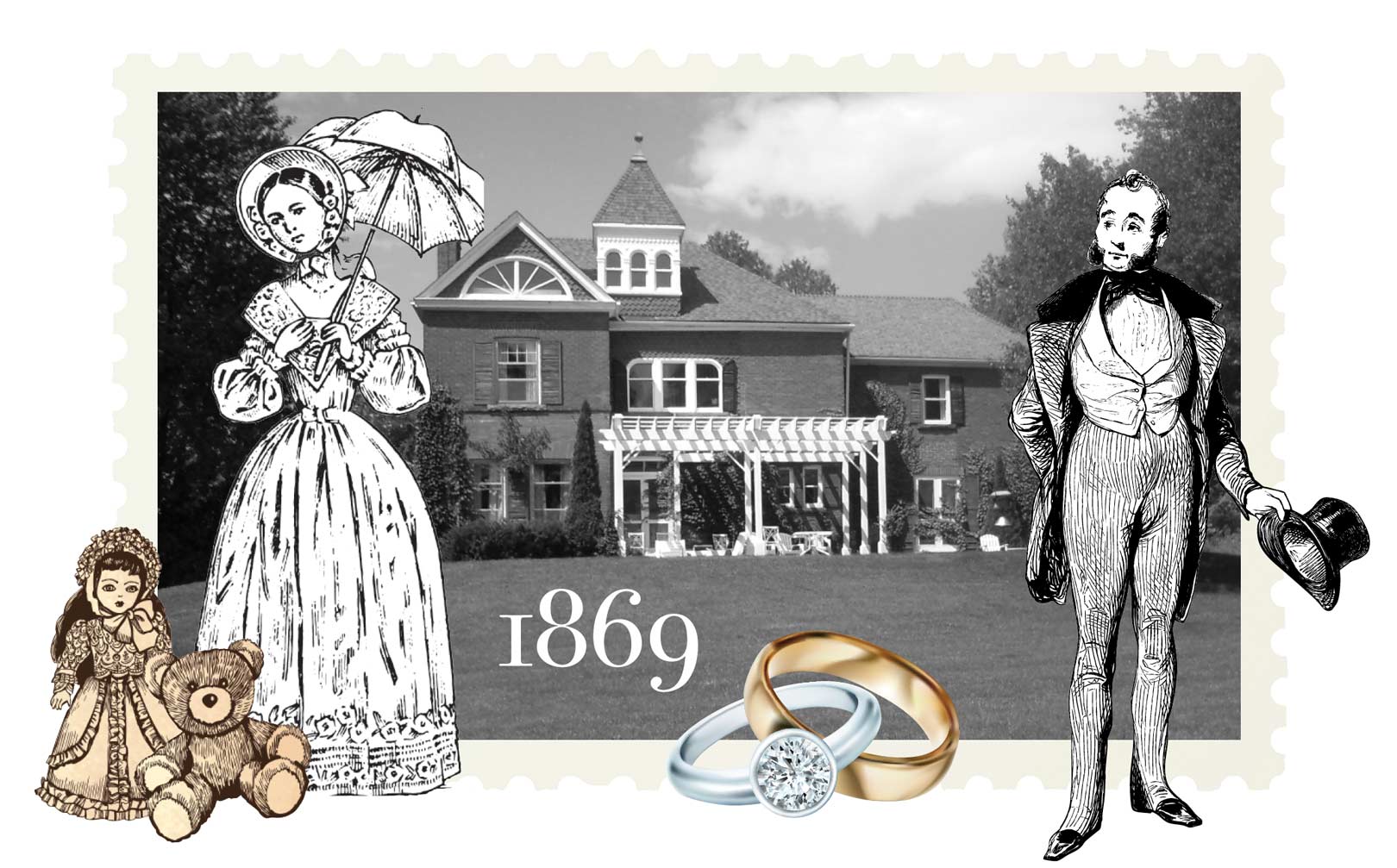
Hidden from view from the highway, there stands a storybook gingerbread house near Baltimore, north of Cobourg, that captures the imagination. It was built in 1895, its playful architecture adorned with a tower, an oversized fanlight window and all the trimmings you’d expect of a Victorian fantasy. The house even has a romantic story attached to it – although one that takes a tragic turn.
The story’s central characters are Charles and Agnes Powell, who despite a difference in age of nearly 20 years, were married in 1869. Twenty-five years later, Charles built the house as a gift to Agnes, whom he appears to have met through her father, John Lawless. It was a classic case of a businessman who falls in love with his client’s daughter.
Charles Powell was an entrepreneur based in Toronto and earned his fortune as the manufacturer of “Powell’s Patent Swing Pump.” The business thrived. Advertisements in The Canada Farmer proclaimed his water pumps were “the most successful Canadian invention of the day.”
The 1891 census finds Charles, then 54, and Agnes, 36, living in downtown Toronto with their three children. Despite their city address, the couple maintained their family ties in Baltimore, visiting for weeks at a time. In time, Charles set his sights on building a house on a nearby farm. Not just any house, but a dream home that would be a testament to his affections for his wife. As reported by the Cobourg World, Agnes was “looking forward to spending Christmas there … under the roof of the new domicile.” Then, in an ominous tone, the reporter added, “But God willed otherwise.” That fall, shortly after the house was completed, Agnes died unexpectedly. She was barely in her forties.
Bereft, Charles didn’t live in the house for long. Soon after his wife’s death, he left Baltimore and eventually sold the house in 1919.
It seems such a sad end to a perfect romance, but if you read her obituary carefully you’ll realize that Agnes didn’t have much of a childhood: She was just 14 at the time of her wedding. She had her first child at 17. Perhaps the dates aren’t entirely accurate, but even her obituary makes note of her having been a “girl bride.” These dates shed light on customs of an era that seem hard to accept in today’s world. To modern minds, the Powells’ marriage raises disturbing questions: Did Agnes have any say about her own marriage? Was Agnes only a pawn in the business relationship between her father and Charles, possibly robbed of her childhood with no control over her own destiny?
In the 19th century, couples tended to marry younger than we do today. While Canadian statistics are not readily available, in the US, about 12 percent of 15- to 19-year-old girls were recorded as wives in the 1880 census. While it might have raised some Victorian eyebrows, Agnes’s marriage to Charles would not have drawn nearly the same social condemnation it would now.
Before we look aghast at the lives of Charles and Agnes, perhaps we should look back at a world that was in many ways different from our own. Victorian standards acknowledged rites of passage – the age at which one finished school, the age one went to work, the age of marriage not by a specific age, but by an arbitrary notion of when the person was “ready.” So, children sometimes quit school before the law said they could; they often left home; and yes, some were wed while they were still minors.
Charles Powell did not remain a widower, and just like his first marriage, his second may have raised eyebrows too. In 1909, he married his sister-in-law, whose husband had died soon after Agnes.
Story by:
Tom Cruickshank




